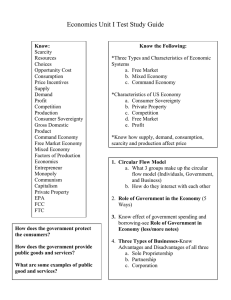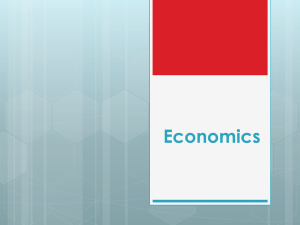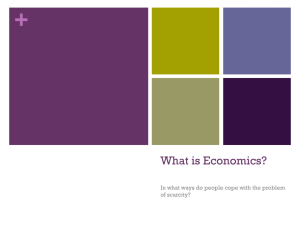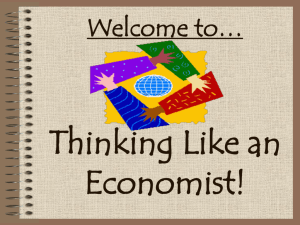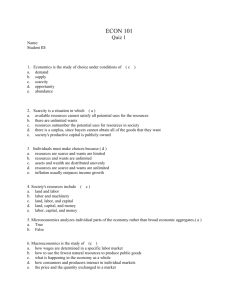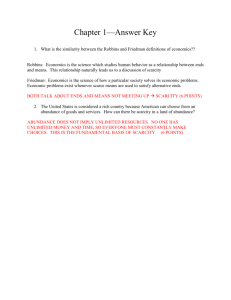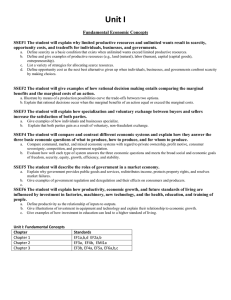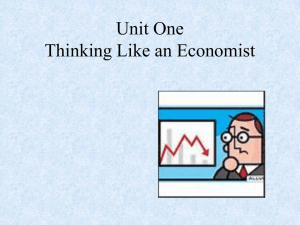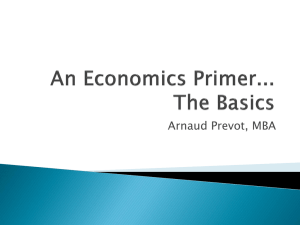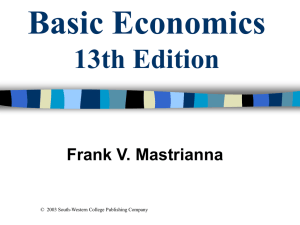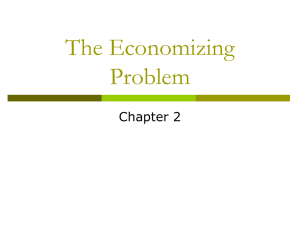Basic Concepts of Economics - Mrs. McGarvey
advertisement
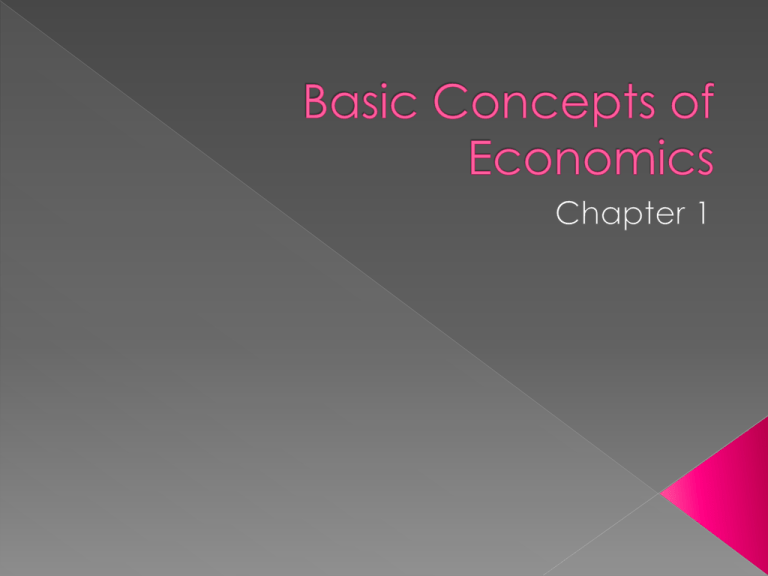
Economics is how each country deals with the allocation of SCARCE resources for fulfilling a society’s needs and wants. › ALL economic problems deal with scarcity Scarcity is the lack of goods and resources to meet unlimited wants and needs. Macroeconomics: is the study of economics on a national or complete scale (tax cuts, unemployment, and entire retail industry) Microeconomics: is the study of individual companies and people making their own decisions in regards to their best interest (supply and demand, business choices, and where to shop) All economic problems stem from this economic condition. Our needs and wants are unlimited, but our resources are limited. › Lack of resources › TINSTAAFL NEEDS – Basic requirements for survival › Examples: food, clothing, shelter WANTS – Means of expressing a need. › Example: You may NEED clothing, but you WANT Gap Jeans. › Can be determined based on a person’s budget. GOODS – Things you can touch, tangible › Consumer Goods – Intended for final use by a consumer (Pizza) › Capital Goods – Intended to produce other goods (Oven) › Durable Goods – A good that lasts three or more years › Nondurable Goods – A good that lasts for less than three years SERVICES – Things you can’t touch, work performed by someone, Intangible › Examples: a haircut, carwash, concerts, home repair The process of using up goods and services to satisfy needs and wants is called consumption. What good or service are you going to produce? Who are you going to produce your good or service for? How are you going to produce your good or service? Capital – Goods and machinery used in the production of various goods and services Examples: tools, equipment, factories, bulldozer, cash register Entrepreneurs – Risk taker that brings productive resources together to produce something for profit. Land – Natural Resources, fixed and limited in supply Labor – Human Resources › Example: workers, skilled and unskilled Most countries have to make trade-offs. (Give up one thing in order to make something else.) What we give up is called the opportunity cost. (the next best alternative use of money, time, or resources) Various combinations of goods and/or services an economy can produce when all productive resources are fully employed. In other words…in order for an economy to produce more of one thing, if all resources are being used to their maximum, something else must be given up – trade-off/opportunity cost. The Father of modern day Economics He wrote a book called the Wealth of Nations He thought the economy works best when the government stays completely out of it. He called this the laissez-faire or “hands off” approach. Invisible hand guides the economy. Actions that take place in one sector of the economy affect other parts of the economy Interdependent activity goes in a circular motion. Circular flow of activity takes place in factor markets and product markets. › Factor markets: where productive resources are bought and sold. › Product markets: where producers offer goods and services for sale.
